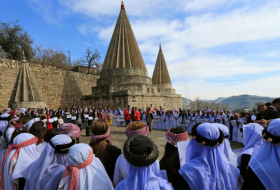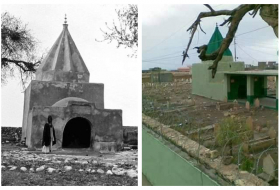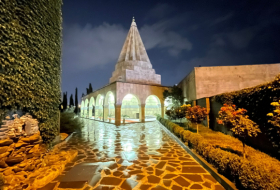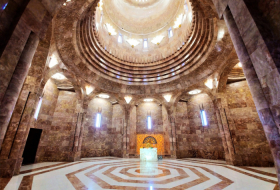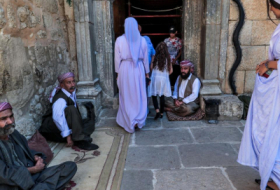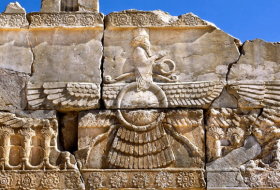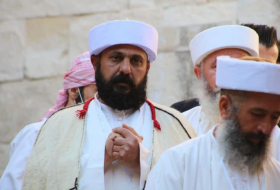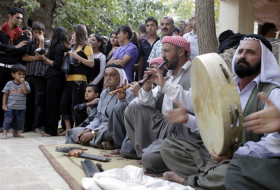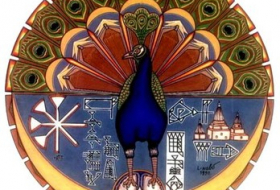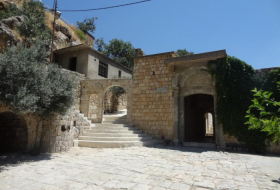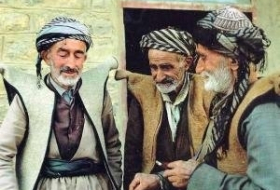The history of a community, Culture and Religion
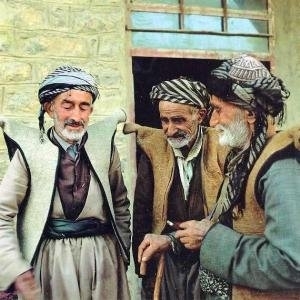
Author- Birgul Ackyldz
Part-2
We are also apprised of the special tradition, shared by Alevis, whereby one must be accompanied by a sister or brother during important life events such as a wedding, death and circumcision. Finally, there are superstitions such as wearing blue, which is associated with heaven and peacock feathers; festivals such as New Year’s Day, which occurs on the first Wednesday in April and is feted with poppies strewn over homes and a certain type of bread called sawuk; and pilgrimage sites, ranging from mausoleums to trees. Besides her deft handling of Yezidi religion and practice, Açkyldz’s specialty is material culture and sacred landscapes, which she explores in the fourth chapter. This chapter also takes us to more concrete matters, such as Yezidi religious and mortuary art (e.g., zoomorphic statues and tombstones) and architecture (e.g., sanctuary, shrines, mausolea and caves). Crucial artistic and architectural evidence covered in this chapter includes ground plans and façade drawings -- with some buildings, such as the mausolea of Sheikh Khetî Besî and Alû Bekir in Bozan in Iraq and the Mausoleum of Sakho Aga, Riya Teze, in Armenia, recorded for the first time -- as well as photographs and site plans for pilgrimage sites. In discussing typology, the author draws comparisons with Islamic and Christian material culture.
She also examines the variations within Yezidi culture based on geography. This chapter is also compelling for it seeks to answer the question of how the Yezidi sacred setting is manifested in art and architecture. Here, the focus is on Iraq’s principal Yezidi settlements -- Sheikhan, Sinjar and Behzâne/Ba’shîqe -- along with accounts of pilgrimage places and mortuary architecture in Syria, Armenia and Turkey. Scholars will benefit from invaluable drawings of previously unknown monuments and sites, excellent dating suggestions for some major Yezidi monuments and attribution of Yezidi patrimony for horseshaped statues in Armenia and Turkey. All such examples show Açkyldz’s mighty achievement: Presenting and interpreting a great range of material for readers, general and academic alike. A broader strength of this book, we come to see, is its skill in contextualizing and locating Yezidi visual culture within art and architectural historical canons.
Having suffered various forms of oppression over the centuries at the hands of Mongols, Ottomans and Persians, the Yezidis’ art and architecture have faced neglect. The book casts a new and valuable light on the Yezidis’ marginalized cultural identity. Implicit in the author’s discussion of the Yezidis -- the book would have benefitted from a more explicit argument in this regard -- is the Kurdish connection. Indeed, most of the Yezidi areas she highlights are ethnically Kurdish and followers of the Yezidi religion almost always speak Kurdish. The author creates an important opening for further expansion in the field of Kurdish studies. In the words of James Cuno, who wrote intensively on issues associated with national and cultural identity: “Culture after all is personal; it is not national. People make culture, nations don’t.” In examining the Yezidis, Açkyldz herself points to the transnational nature of cultural and ethnic identity, transcending nation-states such as Turkey, Iraq, Syria or Armenia. Are Yezidis Kurds and Kurds Yezidis -- members of such groups often identify ethno-religiously before nationally; in any case, such identifications represent complex territory alluded to in this book. To fill out this picture, the author might consider delving into further research to provide a more complete picture of the Yezidis’ cultural heritage, as well as touching on the Yezidi diaspora, namely in Europe. Timely, powerful and comprehensive, Açkyldz’s book demystifies a culture that has historically been assailed from all sides. Last summer’s attacks were only the most brutal. Travelers, scholars and dabblers in history will all be rewarded by this remarkable encounter.
Tags: #yazidisinfo #newsyazidi #aboutyazidi #yazidi #religionyazidi
